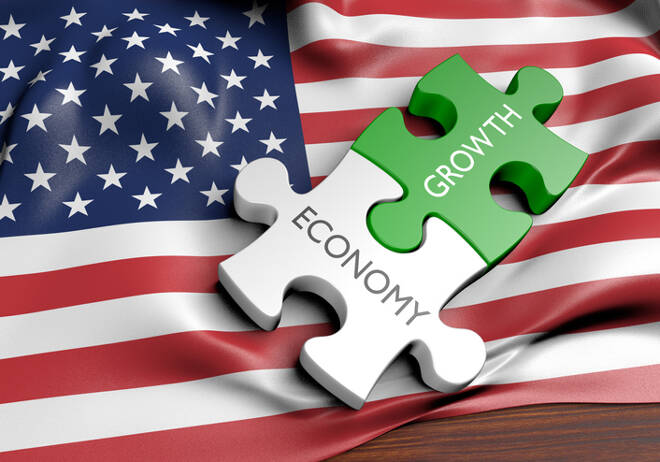Advertisement
Advertisement
Economic Recovery Will Call the Shots With Central Banks in No Hurry to Curtail Stimulus
By:
Monetary stimulus from Fed and fiscal stimulus from Washington present powerful tailwinds for GDP this year.
With the global economy showing signs of improvement as countries roll-out vaccines to fight the coronavirus pandemic, it’s important to monitor where the major central banks stand on interest rates, quantitative easing and the improvements they would need to see to begin relaxing monetary stimulus measures.
At this time, the major central bank policymakers seem to all agree that the pace of the economic recovery will be tied to the speed at which the vaccinations can be administered. Given that assessment, they all seem to be on the same page when they say that the coronavirus pandemic should ease over the first half of the year and give way to strong economic growth during 2021.
This assessment is also driving the rallies in crude oil and stock markets, but it’s not necessarily good enough for the central bank policymakers to begin the tapering process with some still calling for additional stimulus measures to solidify the recovery, some pledging to keep rates historically low for three more years, and some increasing QE.
Fed Has No Clear Exit Strategy Yet, Basically Staying You’ll Know When Its Time
Since these are unprecedented times, there is not blue print for the timing of a clean exit strategy. A Fed member Loretta Mester said last week, the moment at which policymakers might start to withdraw that support would be apparent to investors because the economy will be in a stronger place.
“We want to avoid a taper tantrum,” Mester said. “It’s going to be based on what’s the outcome in the economy. That’s transparent to everyone.
This suggests the Fed is probably going to wait for the economy to overshoot all of its inflationary targets, not just meet them.
The good news is, the economic recovery will be allowed to continue to call the shots for the central banks. In other words, the economy will set the direction and pace for the stock market over time.
Edward Jones Analysts See Economic Recovery Gaining Momentum
As analysts at Edward Jones stated in their weekly analysis, “This is good news for investors because we believe the economic recovery is poised to gain momentum later this year. Key players like the housing market and manufacturing are performing quite well, while monetary stimulus from the Fed and fiscal stimulus from Washington present powerful tailwinds for GDP this year. The distribution of the vaccine should unlock a lift in household spending in the second half of the year, setting the stage for a multiyear economic expansion.”
RBA Committed to Longer-Term Dovish Policy
Fed policymakers aren’t being too specific about the timing of tapering, but last week, the Reserve Bank of Australia said it will need to maintain “very significant monetary support” for several years, with the cash rate set to say near zero for “as long as is necessary” in the wake of the COVID-19 pandemic.
It also surprised the market by extending its bond buying program by another A$100 billion ($76 billion). RBA Governor Lowe also reiterated interest rates will stay low for quite a while yet even though Australia’s A$2 trillion economy has performed far better than expected after largely controlling its coronavirus outbreak.
“Before increasing the cash rate, the Board wants to see inflation sustainably within the 2% to 3% target range,” said RBA Governor Philip Lowe.
Meeting its goal would require a tighter labor market and stronger wages growth than the RBA has forecast, Lowe said.
“It is difficult to determine exactly when this condition might be met but…we do not expect it to be before 2024, and it is possible that it will be later than this,” Lowe added.
Conclusion
Are economic conditions worse than being revealed in the numbers? Are central bankers afraid of lifting stimulus until the pandemic is completely contained? Are the central bank policymakers having a hard time coming up with exit strategies?
The answer could be all of the above, which is why global equity investors continue to buy even at overvalued levels. But who really knows what overvalued is when we have historically low interest rates and massive amounts of quantitative easing and the possibility of additional fiscal stimulus.
Being long is actually a bet against another resurgence in coronavirus cases and against a quick exit from monetary policy by central banks. As long as the vaccines continue to rollout and be effective, a resurgence is not likely to occur. Meanwhile, as long as the central banks are willing to give sufficient time for their economies to recovery, it may take years before the exit strategies are applied. In the meantime, enjoy the bullish ride.
For a look at all of today’s economic events, check out our economic calendar.
About the Author
James Hyerczykauthor
James is a Florida-based technical analyst, market researcher, educator and trader with 35+ years of experience. He is an expert in the area of patterns, price and time analysis as it applies to futures, Forex, and stocks.
Latest news and analysis
Advertisement
